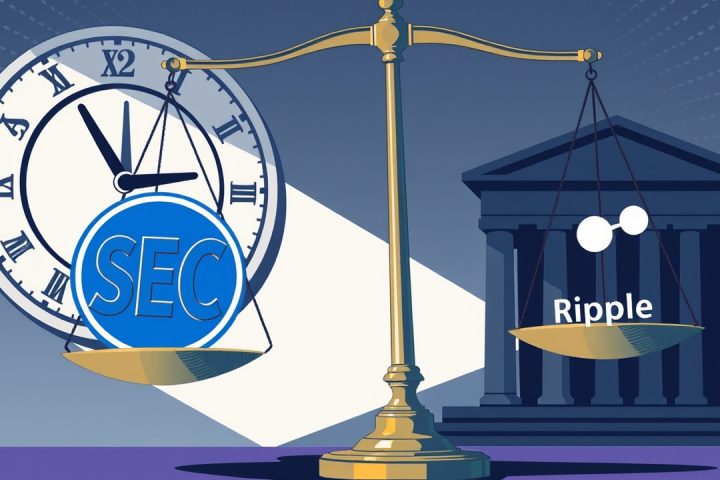The Dynamics of Crypto Interest-Bearing Assets
By Hedy Bi, OKG Research
Introduction
In the evolving economic landscape that can resemble a dramatic television series, the story of tariffs captures significant attention. With gold prices soaring and Bitcoin surpassing the $80,000 mark, the sentiment of risk aversion is subtly resurfacing among investors. The current financial climate resembles a frayed network of teams, where each update regarding inflation forecasts, geopolitical tensions, or trade barriers potentially shifts market sentiment dramatically. As macroeconomic uncertainty becomes entrenched, the concept of “certainty” is morphing into a rare commodity for investors who are not just chasing returns but are instead seeking assurances that can withstand the inevitable market fluctuations.
Investment Trends in Crypto
Amidst this backdrop, crypto investments that promise interest-bearing structures are gaining traction. These digital assets, which offer fixed or variable income, are attracting investor interest as a stabilizing anchor in chaotic markets. However, the notion of “interest” in the cryptocurrency realm extends beyond mere capital appreciation; it leans heavily on the intricate dynamics of protocol architecture and investor perceptions. To truly uncover reliable certainty within the crypto sphere, investors must delve deeper into the mechanisms behind these interest-bearing products rather than relying solely on rudimentary interest tables.
This article, part of the ongoing “Trump Economics” analysis, aims to dissect the dynamics of crypto interest-bearing assets, shedding light on their underlying sources and associated risks. Since the Federal Reserve’s embarkation on interest rate hikes in 2022, the concept of “on-chain interest rates” has caught the attention of the public and investors alike, prompting a reevaluation of the income potential and risk framework associated with on-chain assets.
Types of Interest-Bearing Assets
A new narrative has emerged, aimed at developing yield-bearing cryptocurrency products that can contend with prevailing macro interest rate environments. The income sources of these interest-bearing assets are markedly diverse and can range from revenue produced by the protocols themselves to income illusions derived from external subsidies or adaptations of off-chain interest rate mechanisms. Thus far, we can categorize these assets into three distinct types:
- Exogenous Income
- Endogenous Income
- Real-World Asset (RWA) Connectors
Exogenous Income: Subsidy-Driven Illusions
The rise of exogenous income exemplifies the rapid growth strategies employed in the nascent stages of DeFi. In scenarios lacking a reliable user base and genuine cash flow, the market has often turned to what can be termed the “incentive illusion”. Similar to the initial strategies of ride-hailing platforms that utilized subsidies to expand their user base, platforms like Compound have sparked liquidity mining, leading various other ecosystems such as SushiSwap and Curve to implement substantial token incentives to attract users under the guise of “investment income.”
“These subsidies typically represent a short-term fix, characterized by capital markets seeking immediate growth metrics rather than establishing sustainable income sources.”
This model serves as a recognizable pattern for initializing new protocols across many fields, including Layer 2 solutions and SocialFi, effectively akin to a Ponzi structure. While enticing users with extraordinary returns, these systems often conceal the eventual requirement for complex withdrawal criteria, leading to scenarios where hundreds of percent returns are generated from tokens created out of thin air.
A cautionary tale can be found in the collapse of Terra in 2022, which gained traction by offering a staggering 20% annualized return on UST stablecoin deposits primarily funded by external subsidies rather than true ecosystem-generated income. Historical trends show that once these external incentives falter, a wave of token sell-offs can ensue, triggering cascading declines in user confidence and total value locked (TVL). Indeed, after DeFi summer faded, roughly 30% of DeFi projects saw their market value plummet over 90%, largely due to unsustainable subsidies.
Endogenous Income: Unearthing Genuine Value
On the other hand, endogenous income refers to revenue generated through the core functioning of protocols without the dependency on coin emissions or external financial injections. Here, income stems from activities such as lending and transaction fees—akin to “dividends” in traditional finance. This income type illustrates a more sustainable and coherent financial structure since its viability is tied to the protocol’s operational success rather than market-driven whims.
Within this framework, we can observe three models:
- Lending and Borrowing Spread: Users provide liquidity to lending platforms like Aave and Compound, which in turn earn from the interest that borrowers pay—reminiscent of conventional banking practices.
- Fee Return: This revenue model resembles traditional corporate dividends, redistributing a share of earned fees back to liquidity providers or token holders based on their contributions.
- Protocol Service Income: This innovative mechanism generates returns by providing essential infrastructure services, reflecting the intrinsic value of the protocol’s capabilities.
Connecting to Real-World Assets (RWA)
As the market evolves, an increasing number of investors are gravitating towards a more stable return model that intricately ties on-chain assets to traditional financial instruments. The idea revolves around connecting on-chain stablecoins with reliable off-chain entities, such as government bonds or money market funds. Notable projects like MakerDAO have started to absorb these interests while leveraging short-term government bonds to create stable, predictable returns, thus merging the fluidity of crypto assets with the stability of traditional finance.
Furthermore, new derivatives in the form of interest-bearing stablecoins, such as Mt. Protocol’s USDM and Ondo Finance’s USDY, offer daily yield on investments from treasury bonds creating an innovative blend of liquidity and income generation within the digital dollar framework.
Conclusion
Assessing the sustainability of these interest-bearing crypto assets entails understanding their income-generating structures amidst fluctuating market conditions. Future developments in this domain will aim to establish a robust framework akin to traditional money markets while maintaining the flexibility and innovation characteristic of on-chain systems. Investors must remain cautious, understanding that the promise of income is always accompanied by inherent risks across technical, regulatory, and liquidity landscapes. Emphasizing these nuanced variables can guide investors toward authentic opportunities within the ever-evolving crypto financial ecosystem.




